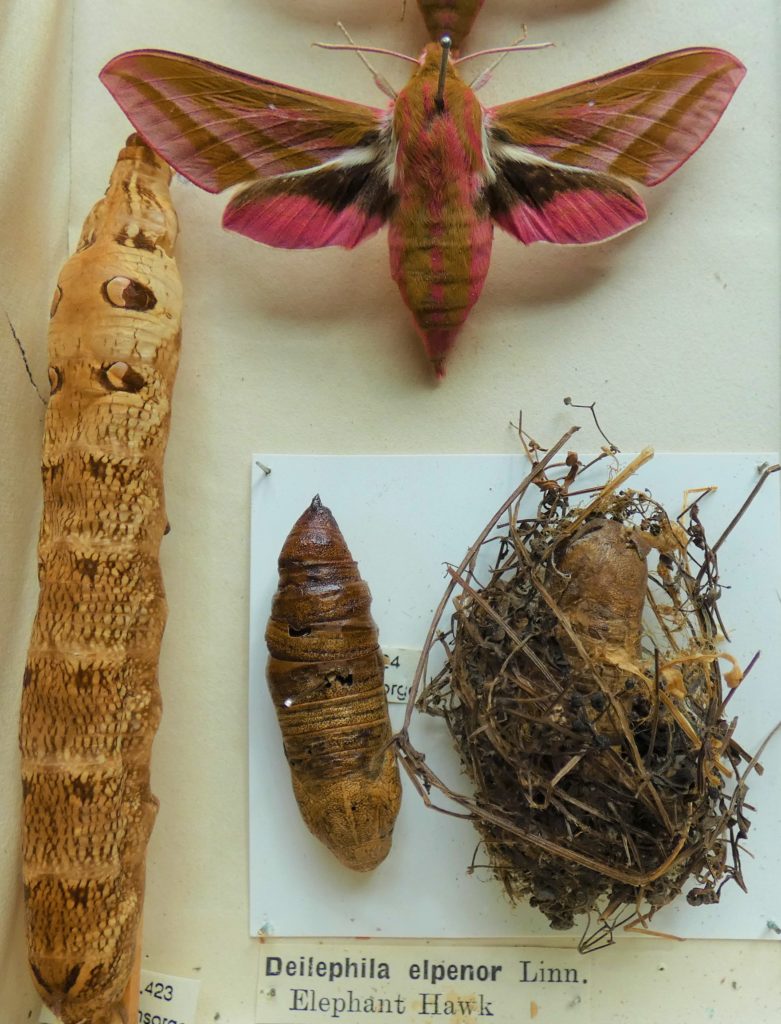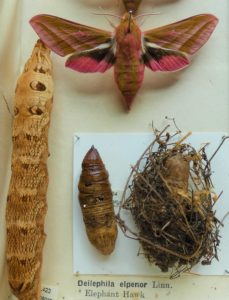This month’s Keepers Corner theme, ‘Creativity unwrapped’, made me think of one of nature’s most creative reveals – the remarkable transformation of a caterpillar into a butterfly or a moth.
The image here is from one of the Museum’s historic insect collections dating back over a hundred years. It shows the caterpillar (left), cocoon (right) and adult of an Elephant Hawkmoth. The caterpillars of this moth usually feed on willowherbs (June to September) but may also be found on fuchsias where they may give gardeners a fright due to their prominent eye markings, probing ‘trunk’ (hence the name) and overall size (8cm).
Moths have four life stages – egg, caterpillar, cocoon and adult with the unseen transformation from juicy caterpillar to the winged beauty taking place inside the cocoon. But how does this happen? The caterpillar’s job is to eat like crazy, bulking up as much as possible. Hidden within this bulk are a series of tiny ‘imaginal discs’ that contain cells which will form the various structures of the adult moth (wings, legs, antennae, etc). However, during the caterpillar stage, their development is supressed by hormones. When the caterpillar reaches a certain size it forms a protective cocoon leading to a change in hormones. As a result, most of the caterpillar’s body breaks down into a nutrient-rich soup that powers the development of the imaginal discs into the different parts of the adult. The Elephant Hawkmoth spends winter as a cocoon before transforming and revealing its vibrant pink wings to the world in spring.





